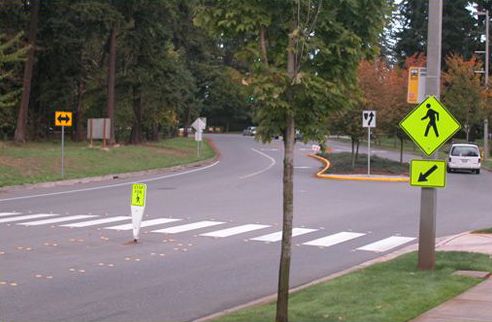|
Lesson 12: Midblock Crossings

Lesson Outline
- Pros and cons of midblock crossings.
- Advantages of using medians with midblock crossings.
- Design considerations for using medians with midblock crossings.
- Where midblock crossings should be allowed.
Where To Use Midblock Crossings
- Long distances between intersections.
- Churches.
- Schools.
- Hospitals.
- High pedestrian activity locations.
Advantages of Using Medians
- Allow more frequent gaps.
- Reduce conflicts.
- Concentrate pedestrians crossings in one central location.
- Cost less to build and maintain.
Potential Issues with Midblock Crossings
- High-speed suburban roadways create challenging conflicts.
- Motorist do not expect midblock crossings.
- Motorist do not always yield at midblock crossings.
Uses of Midblock Crossings
- Local roads.
- Collector roads.
- Arterials with four lanes.
- Arterials with six or more lanes.
Design Considerations for Using Medians
- Connection of desired locations.
- Lighting.
- Use of same techniques as in lesson 10 (various crosswalk types, signs, signals and markings).
- Staggered/offset crossings.
- Detection.
Design Considerations for Using Medians
- Curb extensions to reduce crossing distance.
- Width:
| - 2.4 m (8 ft) desirable. |
| - 0.6 m (2 ft) minimum. |
- Ramps may be needed.
- Drainage.
Pedestrian Crossing Examples
| |
| Sources: Southeast Neighborhood Traffic Management Plan, Vancouver, WA, and Bicycle Facilities Guide: Types of Bicycle Accommodations. |
Lesson Summary
- Midblock crossings can be an effective part of the overall pedestrian network.
- Midblock crossings can be created by using simple designs and logical guidelines.
FHWA-HRT-05-108
|
